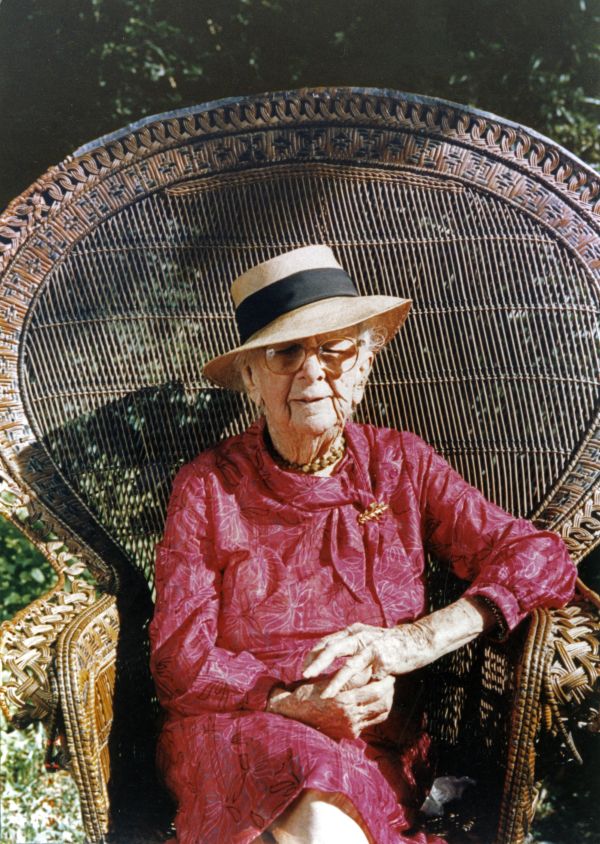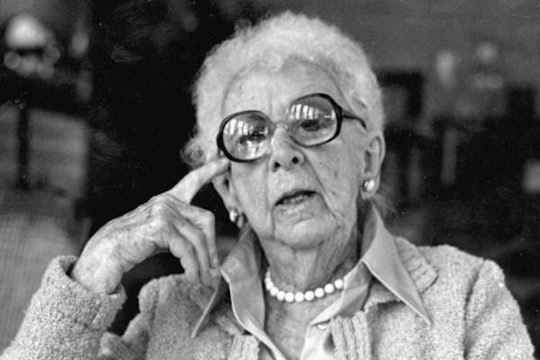Meet Marjory Stoneman Douglas, champion and savior of the Everglades
Writer, suffragette, and fierce protector of the "worthless swamp"
Today, we associate the name Marjory Stoneman Douglas with the tragic and deadly school shooting at a high school in Parkland, Florida. But before February 14, 2018, Marjory Stoneman Douglas was known only for her life as a writer and an environmentalist. Also an activist who worked for women's and civil rights, her most famous legacy was as the defender of the Everglades, which today is protected in a 1.5 million-acre wetland preserve.
Just 10,000 people lived in Miami when Douglas first arrived to Florida in 1915. Though today over 2.7 million people inhabit the sprawling Miami-Dade County, the Everglades remain pristine— protected because of Marjory Stoneman Douglas.

She was born on April 7, 1890 in Minneapolis, Minnesota, but raised in Massachusetts after her parents divorced. Douglas was close with her mother, Lillian Trefethen, a musician who struggled with physical and mental health issues, often leaving young Douglas in the role of caretaker. With support from her mother’s family, she attended Wellesley College and graduated as an English major with a 4.0 GPA in 1912. But weeks after graduating, her mother died from breast cancer. A devastated Douglas started her first job as a sales clerk at a department store in Boston—but she didn't stay there long.
Career # 1: Journalist and assistant editor at Miami Herald
After a short-lived marriage to Kenneth Douglas—who was 30 years older and a con-man, jailed soon after their marriage — Marjory Stoneman Douglas headed to Miami, Florida in 1915 to reunite with her estranged father, Frank Stoneman. Stoneman, editor of the Miami Herald, believed women should be independent, and offered Douglas a job as the newspaper’s society columnist. (Much later in life, Douglas would divulge that after ending her marriage she never had sex again, saying if you are in love with a man, “you are unconsciously dependent on him.”)
Quickly bored by writing about society events, Douglas began to advocate for women and civil rights. She traveled from Miami to the capital by train to speak before a joint committee on women’s right to vote. Every man who served in the state legislature ignored her.
In 1917, in the throes of World War I, the US Navy opened its ranks to women. Douglas jumped to cover the story of a local woman who was going to enlist. Although the woman never showed up at the Navy recruiting station, Douglas was inspired, and enrolled herself, becoming the first woman to enlist in Florida. Despite her activism, Douglas never referred to herself as a feminist, writing, “I’d like to hear less talk about men and women and more talk about citizens.”
After a year stationed in Miami, she joined the American Red Cross in Paris. When the war ended, she stayed on, and was traveling alone through Italy and France when her father telegrammed to offer her a job. Douglas returned to the Miami Herald to write a daily column, where she championed progressive causes like women’s suffrage and urban planning.
Career # 2: Freelance writer and author
The pressure of editing and writing a daily column led Douglas to step away from the newsroom. She composed fiction and non-fiction for magazines like the Saturday Evening Post, which eventually published 38 of her stories. Later, she wrote novels and even a prize-winning play, The Gallows Gate. Her most famous book, however, was about the Everglades.
When Hervey Allen, editor of Rinehart and Company, invited her to write a book about the Miami River, Douglas counter-proposed: She was more interested in what she called the “river of grass,” a slow-moving stream that flowed through the sawgrass of the Everglades. After five years of research, she published “The Everglades: River of Grass” in 1947. It opened with a simple line: “There are no other Everglades in the world … nothing anywhere else is like them.” Douglas weaved history and science with evocative descriptions of the landscape. The result was compelling, having a similar effect in raising awareness for the Everglades as Rachel Carson's ‘Silent Spring’ had for banning pesticides. Four weeks after her book’s publication, Douglas shared the stage with President Harry Truman when he dedicated the Everglades as a National Park.
Career #3: Conservationist
As the human population in Florida boomed, developers and farmers started to drain the wetlands to create dry land for agriculture and development. In the 1950s, the US Army Corps of Engineers constructed a system of levees, canals, and water pumps, channeling and attempting to control the wetlands' water flow for urban development. But in 1968, a plan to build an airport— five times larger than JFK —in the Everglades sparked Douglas to action. At 79, Douglas launched into a career as an environmentalist.
In 1969, she started the non-profit organization, Friends of the Everglades, leading opposition to the airport. She raised money and created awareness to stimulate interest in protecting the park. In a 1981 NPR interview, she described the struggle to preserve the wetland as “an enormous battle between man’s intelligence and his stupidity—and I’m not at all sure that stupidity isn’t going to win out in the end.”

Douglas once commented that she and the Everglades didn’t have a friendship dependent on “constant physical contact”—she was never an outdoors-woman, explaining, “It’s too buggy, too wet, too generally inhospitable.” But feisty, independent, and unconventional (she disliked cars and never learned to drive), she was indefatigable in her fight for the Everglades.
Douglas did eventually succeed in halting the project, although not before one runway was built. “Elegant and scrappy,” she continued to fight for the Everglades' protection, appearing at rallies in her recognizable white gloves, floppy hat, and dark glasses as her eyesight slipped away. (She also enjoyed her sherry and later in life ended her work day with two fingers of scotch, neat. What a gal.)
Everglades National Park: Her lasting legacy
When Douglas arrived to Florida, the Everglades was considered a worthless swamp, full of unpleasant critters, disease, and death. But Douglas recognized the landscape's value. A science communicator before the phrase existed, her writing helped others understand that the dynamic ecosystem of the Everglades hung in a fragile balance: water flowed ever soooo slooooowly from the Kissimmee River to Lake Okeechobee and south toward the ocean. This slow-moving river, sometimes just inches deep and 50 miles wide, was responsible for creating and nurturing a diverse landscape as it moved south, spawning a mystical landscape of marshes, mangroves, palms, and pineland forests, where the North American temperate zone merged with the tropical Caribbean.
Today, the Everglades National Park protects the largest stand of sawgrass in North America, the largest mangrove ecosystem in the western hemisphere, and provides habitat for 21 federally threatened and endangered species, like the Florida panther. As an added bonus, the Everglades replenishes the aquifer on which southern Floridians depend for drinking water. We have Douglas to thank.
President Clinton awarded Douglas the Presidential Medal of Freedom in 1993 for her unflagging efforts in the preservation of the Everglades. In 1997, the National Park Service named 1.3 million acres of the park the Marjory Stoneman Douglas Wilderness—86 percent of the park and the largest wilderness area (land free from permanent improvements) east of the Rocky Mountains. On May 14, 1999, Douglas died at the age of 108—while the city of Miami was only 102—in the same house in Coconut Grove that she'd lived in for 72 years. Her ashes were scattered in the Everglades, finding a final resting place in her river of grass.

